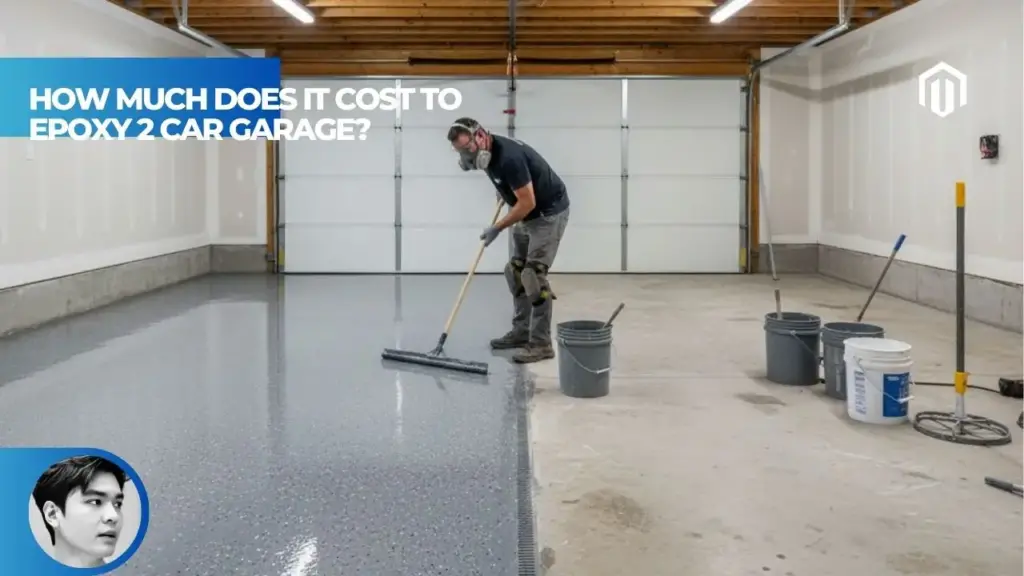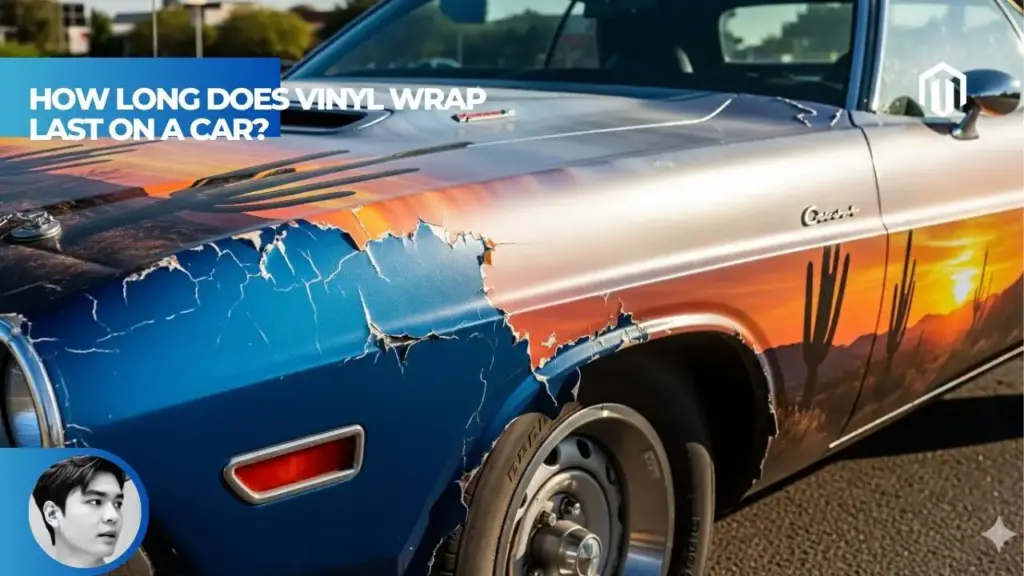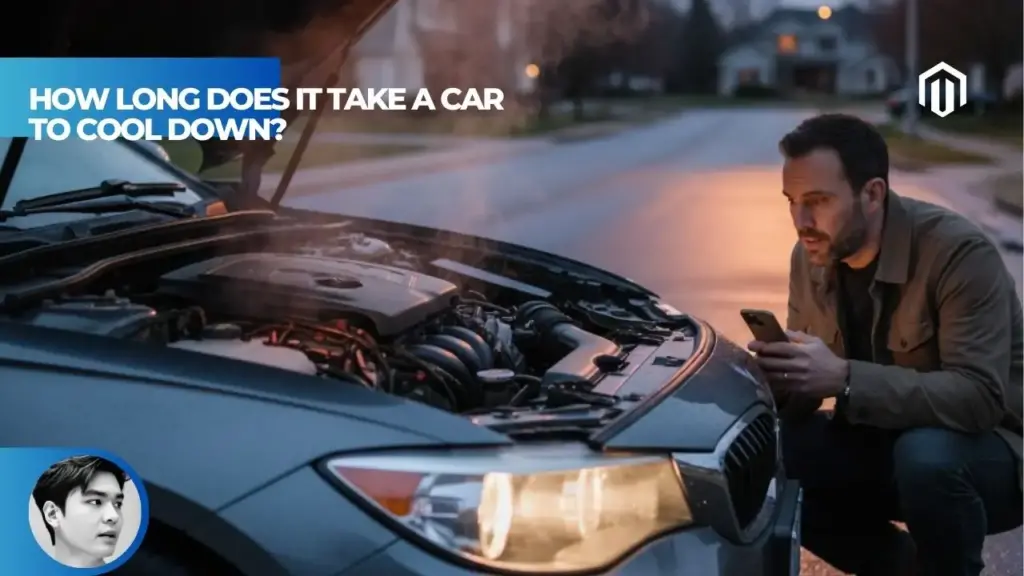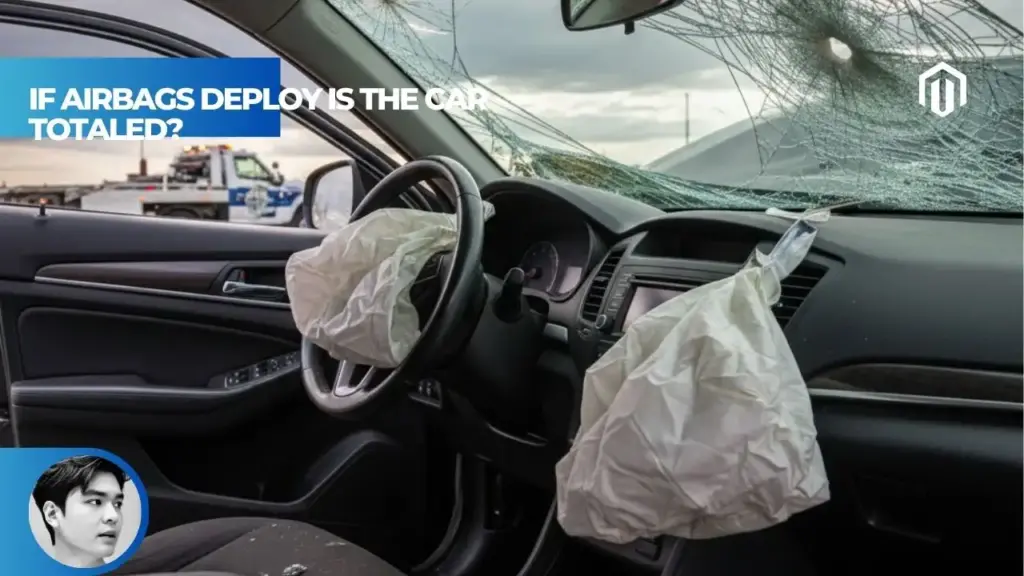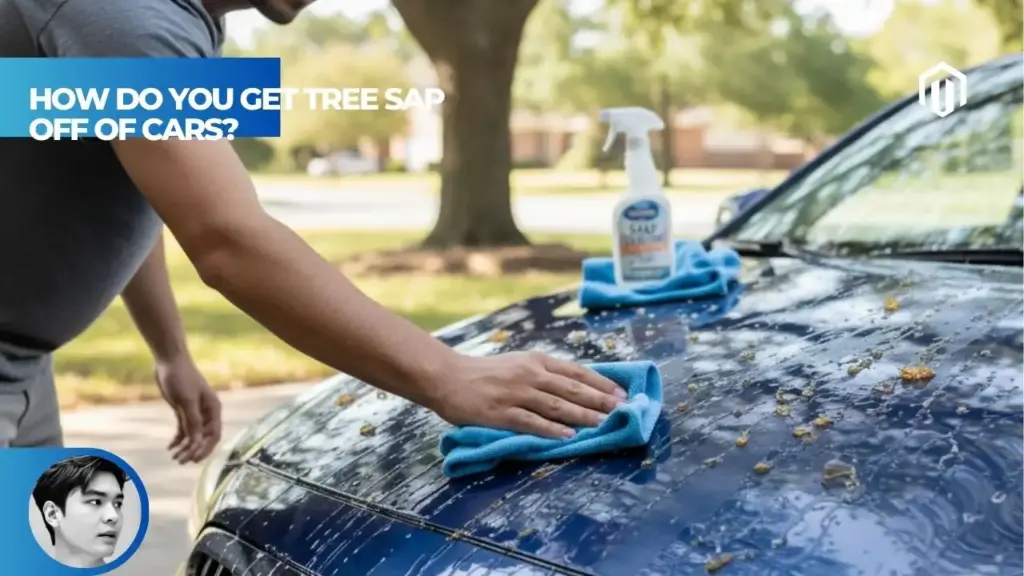You may also like:
- 【Explained】What Happens When Your Car Is Totaled But Still Drivable?
- 【Explained】If Airbags Deploy, Is the Car Totaled? (The 2025 Cost vs. Value Guide)
- 【Explained】How Much Is It to Fix a Car Bumper? Full Cost Breakdown by Damage Type
- 【Explained】What’s the Maintenance Cost for BMW? 10-Year Ownership Averages and Budgeting
- 【Explained】Why Is Your Car Accident Settlement Taking So Long? (And What You Can Do About It)
Yes, you absolutely need full coverage on a financed car because your lender requires it as a condition of your loan agreement to protect their financial interest in the vehicle. This requirement remains in effect until you pay off the loan completely and receive the title, at which point you can choose whether to maintain full coverage or switch to liability-only insurance.

Insurance Requirements for a Financed Car
When you finance a vehicle, you’re entering into a legal agreement that extends beyond just monthly payments. The insurance requirements become part of your contractual obligations, fundamentally different from what state law mandates for cash purchases.
Is Full Coverage Mandatory on a Financed Car
Full coverage is mandatory for financed vehicles through your loan agreement, not state law. According to industry data, 100% of auto lenders require comprehensive and collision coverage on financed vehicles[1]. This universal requirement exists because the vehicle serves as collateral for your loan—if something happens to it, the lender needs assurance they’ll recover their investment.
The mandatory nature of full coverage appears in your loan documents, typically in a section titled “Insurance Requirements” or “Borrower’s Covenants.” Violating these terms constitutes breach of contract, triggering serious consequences beyond simple insurance lapses.
Does My Auto Loan Require Full Coverage
Your auto loan unequivocally requires full coverage, regardless of the lender. Major financial institutions like Chase, Wells Fargo, and Capital One all mandate identical coverage:
- Comprehensive coverage protecting against non-collision damage
- Collision coverage for accident-related repairs
- Liability coverage meeting or exceeding state minimums
- Maximum deductibles of $500-1,000 per coverage type
Small credit unions and local banks financing vehicles maintain these same requirements, as they follow standardized lending practices established by federal regulators.
Lender Requirements for Car Insurance
Lenders specify exact coverage requirements that exceed basic state minimums. A typical loan agreement mandates:
| Coverage Type | Typical Requirement | Purpose |
|---|---|---|
| Bodily Injury Liability | $100,000/$300,000 | Protects against lawsuits |
| Property Damage | $50,000 minimum | Covers damage to others’ property |
| Collision | Actual cash value | Repairs your vehicle after accidents |
| Comprehensive | Actual cash value | Covers theft, vandalism, weather |
| Deductibles | $1,000 maximum | Ensures meaningful coverage |
These requirements protect both parties—you avoid catastrophic financial loss, while lenders ensure their collateral remains protected.
State Law vs Lender Requirements Auto Insurance
State insurance laws and lender requirements operate independently, creating a two-tier system for financed vehicles. While California recently increased minimum liability requirements to 30/60/15 effective January 2025[2], these changes don’t affect lender mandates for comprehensive and collision coverage.
Understanding this distinction proves crucial: you could meet every state requirement yet still violate your loan agreement by lacking full coverage.
Minimum Insurance for a Financed Car
The minimum insurance for financed vehicles significantly exceeds state requirements. While states mandate only liability coverage averaging $631 annually, financed vehicles require full coverage averaging $2,671 per year[3]—more than four times the cost.
This disparity reflects the fundamental difference between legal compliance and contractual obligations. State minimums protect other drivers; lender requirements protect the vehicle itself.
Financing a Car Insurance Needs
Financing dramatically alters your insurance needs and budget. Autvex analysis shows financed vehicles require:
- 4.2x higher premiums than state minimums
- Additional coverage types beyond legal requirements
- Lower deductible options to meet lender standards
- Continuous coverage without any gaps
Planning for these increased costs before financing prevents budget shock. Many buyers focus on monthly payments without considering that insurance might add $200-300 to their monthly transportation costs.
What is Full Coverage Car Insurance
The term “full coverage” creates confusion since it’s industry shorthand rather than an official insurance product. Understanding its components helps you meet lender requirements while avoiding unnecessary coverage.
What Does Full Coverage Include
Full coverage combines three distinct insurance types into comprehensive protection. Each component serves specific purposes in protecting your financed vehicle and satisfying lender requirements.
Liability Coverage forms the foundation, covering damages you cause to others. This includes bodily injury and property damage liability, required in every state except New Hampshire. For financed vehicles, lenders often mandate higher limits than state minimums to protect against lawsuit-related asset seizure.
Collision Coverage pays for your vehicle’s repairs after accidents, regardless of fault. This coverage activates when you hit another vehicle, object, or experience a rollover. The maximum payout equals your car’s actual cash value minus your deductible.
Comprehensive Coverage protects against non-collision damage including theft, vandalism, weather events, and animal strikes. In 2025, comprehensive claims average $420 annually while providing crucial protection for financed vehicles[3].
Collision and Comprehensive Coverage
These twin coverages form the core of lender requirements, as they directly protect the collateral. Without them, a totaled vehicle could leave you owing thousands on a car you can no longer drive.
Collision and comprehensive work together but cover different scenarios:
- Collision: You slide on ice into a guardrail
- Comprehensive: A tree falls on your parked car
- Collision: You rear-end another vehicle
- Comprehensive: Your car is stolen from a parking lot
Both coverages use actual cash value calculations, meaning depreciation affects payouts. This gap between loan balance and vehicle value creates additional risk for underwater loans.
Is ‘Full Coverage’ a Real Term
“Full coverage” isn’t a technical insurance term but rather consumer shorthand that’s become universally understood. Insurance policies never use this phrase; instead, they list specific coverage types and limits. However, when lenders require “full coverage,” they mean comprehensive and collision coverage plus state-required liability insurance.
The informal nature of this term sometimes creates confusion when shopping for insurance. Always specify that you need comprehensive and collision coverage for a financed vehicle rather than just asking for “full coverage.”
Required Components for Financed Vehicles
Lenders mandate specific coverage components that go beyond basic full coverage definitions, creating standardized protection levels across the industry.
Do I Need Collision on a Financed Car
Yes, collision coverage is absolutely required for all financed vehicles without exception. This requirement appears in 100% of auto loan agreements because collision damage represents the highest probability risk to the vehicle’s value. The average collision claim costs $4,500, making this coverage essential for protecting the lender’s investment[4].
Attempting to remove collision coverage triggers immediate notification to your lender through insurance reporting systems, initiating enforcement actions within days.
Do I Need Comprehensive on a Financed Car
Comprehensive coverage is equally mandatory for financed vehicles, protecting against the 35% of claims that don’t involve collisions[4]. Weather-related claims alone account for billions in annual damages, making comprehensive coverage crucial for lender protection.
The requirement for comprehensive coverage intensifies in certain regions. Vehicles in areas prone to flooding, hail, or high theft rates may face stricter comprehensive requirements or lower maximum deductibles.
Deductible Requirements for Financed Car
Lenders cap deductibles to ensure meaningful coverage when claims occur. Standard requirements include:
- Maximum $1,000 deductible for collision
- Maximum $1,000 deductible for comprehensive
- Some lenders require $500 maximum for leased vehicles
- Luxury car lenders may mandate $250 deductibles
Higher deductibles reduce premiums but increase your out-of-pocket costs during claims. Lenders restrict this trade-off to prevent situations where high deductibles discourage necessary repairs, potentially damaging the collateral’s value.
What Happens If I Drop Full Coverage on a Financed Car
Dropping full coverage on a financed vehicle triggers a cascade of consequences that can devastate your finances and credit. The process moves quickly once your lender discovers the coverage lapse.
Consequences of Dropping Coverage
Insurance companies report coverage changes to lenders within 15-30 days, initiating immediate action. Your lender’s response follows a predictable but aggressive pattern designed to protect their investment.
First comes the warning letter, arriving within days of notification. This letter details your breach of contract and provides a short cure period—typically 10-30 days—to reinstate coverage. Ignoring this warning escalates consequences rapidly.
What is Force-Placed Insurance
Force-placed insurance, also called lender-placed insurance, is coverage your lender purchases when you fail to maintain required insurance. This coverage costs 4 to 10 times more than standard insurance while providing inferior protection[5].
Force-placed insurance only protects the lender’s interest, meaning:
- No liability coverage for injuries you cause
- No medical payments for your injuries
- No rental car coverage during repairs
- No personal property protection
- Claims paid to lender, not you
The average force-placed policy costs $4,000-6,000 annually compared to the $2,671 average for standard full coverage[5].
Lender-Placed Car Insurance Costs
The extreme costs of lender-placed insurance stem from several factors. Insurance companies charge premium rates because they’re insuring vehicles sight unseen, without traditional underwriting. They assume maximum risk, passing costs to borrowers who’ve already demonstrated non-compliance.
Real-world example: A $25,000 financed vehicle with dropped coverage:
- Standard full coverage: $223/month
- Force-placed insurance: $580/month
- Additional cost: $357/month or $4,284/year
These inflated premiums get added to your loan balance, increasing both monthly payments and total interest paid over the loan term.
Penalties and Repossession Risks
Beyond financial costs, dropping coverage exposes you to legal penalties and potential vehicle loss.
Can My Lender Repossess My Car for No Insurance
Yes, lenders can and will repossess vehicles for insurance non-compliance. Your loan agreement explicitly lists maintaining insurance as a condition for keeping the vehicle. Violating this condition provides legal grounds for repossession, even if you’re current on payments.
The repossession process for insurance violations typically follows this timeline:
- Days 1-15: Coverage lapse detected
- Days 16-30: Warning letter sent
- Days 31-45: Force-placed insurance added
- Days 46-90: Final notice before repossession
- Day 91+: Repossession authorized
Repossession for insurance violations appears on credit reports identically to payment-based repossessions, damaging your credit score by 100-150 points for seven years.
Penalty for Not Having Full Coverage on Financed Car
Penalties extend beyond force-placed insurance costs. Additional consequences include:
| Penalty Type | Impact | Duration |
|---|---|---|
| Late fees | $25-50 per month | Until resolved |
| Default interest rates | +2-5% APR | Remainder of loan |
| Legal fees | $500-2,000 | One-time charge |
| Credit score damage | -50 to -150 points | 7 years |
| Future loan denial | Higher rates/rejection | 2-4 years |
These penalties compound quickly, turning manageable loans into financial disasters.
Letter from Lender About Insurance
The insurance warning letter represents your last opportunity to avoid serious consequences. This legal notice typically includes:
- Specific violation details citing loan agreement sections
- Cure period deadline (usually 10-30 days)
- Force-placed insurance costs if you don’t comply
- Repossession warning for continued non-compliance
- Contact information for questions or hardship assistance
Responding immediately to this letter—even to discuss financial hardship—can prevent escalation. Lenders prefer compliance over repossession and may offer temporary solutions.

When Can You Drop Full Coverage
The freedom to modify coverage arrives only after specific conditions are met, primarily centered on loan satisfaction.
Can I Drop Full Coverage After My Car is Paid Off
Yes, you gain complete control over insurance decisions immediately upon loan payoff. Once you receive the title showing you as sole owner, no entity can mandate coverage types or levels. This moment represents significant potential savings, as dropping comprehensive and collision coverage can reduce premiums by 60-70%.
The decision to maintain or drop coverage should consider:
- Vehicle value versus potential repair costs
- Personal financial reserves for unexpected repairs
- Risk tolerance for total loss scenarios
- Local factors like weather, crime, and accident rates
When Can I Stop Having Full Coverage
You can stop full coverage the day your loan is satisfied and you receive clear title. However, timing this transition requires careful planning:
- Confirm loan payoff with your lender
- Receive title showing no liens
- Contact insurance company to modify coverage
- Evaluate vehicle value before dropping coverage
- Consider gradual reduction rather than immediate elimination
Autvex recommends maintaining full coverage for at least 30 days post-payoff to ensure all paperwork processes correctly and no surprise liens appear.
Do I Need Full Coverage on a Car I Own Outright
No legal or contractual requirement exists for full coverage on owned vehicles. The decision becomes purely financial, balancing premium costs against potential losses. General guidelines suggest maintaining full coverage when:
- Vehicle value exceeds $4,000-5,000
- You can’t afford to replace the vehicle
- You live in high-risk areas for theft or weather
- The vehicle is relatively new (under 10 years)
For older vehicles worth under $4,000, comprehensive and collision premiums often exceed potential payouts, making liability-only coverage more economical.
Strategic Coverage Decisions
Smart coverage decisions balance protection needs with financial efficiency, requiring periodic reassessment as vehicles age.
When to Drop Collision Insurance
Collision coverage becomes questionable when annual premiums approach 10% of vehicle value. For a car worth $5,000, paying $500 annually for collision coverage means you’re essentially buying the car again every 10 years through premiums.
Consider dropping collision coverage when:
- Vehicle value drops below $3,000-4,000
- Premium exceeds 10% of car value
- You have emergency savings for replacement
- Repair costs would exceed vehicle value
- You own multiple vehicles providing redundancy
The 10% rule provides a starting point, but personal circumstances ultimately determine appropriate coverage levels.
Keeping Full Coverage on an Old Car
Sometimes maintaining full coverage on older vehicles makes sense despite conventional wisdom. Situations favoring continued coverage include:
Classic or Appreciating Vehicles: Some older cars gain value, making standard depreciation calculations irrelevant. Classic car insurance might provide better options than standard full coverage.
Single Vehicle Households: If you depend on one car for work and lack replacement funds, full coverage provides crucial protection regardless of vehicle age.
High-Risk Locations: Areas with elevated theft, vandalism, or severe weather might justify comprehensive coverage even on older vehicles.
Sentimental Value: While insurance won’t cover sentimental value, it can help preserve irreplaceable vehicles through repair funding.
Related Insurance Concepts
Understanding related insurance products helps optimize protection while meeting all requirements.
Leased Vehicle Insurance Requirements
Leased vehicles face even stricter insurance requirements than financed cars, reflecting the lessor’s ownership throughout the term.
Do You Need Full Coverage on a Leased Car
Yes, leased vehicles require full coverage plus additional protections exceeding typical finance requirements. Lease agreements commonly mandate:
- Higher liability limits ($100,000/$300,000 minimum)
- Lower deductibles ($500 maximum)
- GAP insurance (often included in lease)
- Excess wear protection (optional but recommended)
Lease insurance costs average 15-20% higher than financed vehicles due to these enhanced requirements. The lessor maintains ownership interest throughout, intensifying their protection needs.
GAP Insurance and Financed Cars
GAP (Guaranteed Asset Protection) insurance bridges the divide between vehicle value and loan balance, crucial for financed vehicles experiencing rapid depreciation.
Do I Need GAP Insurance on a Financed Car
GAP insurance isn’t legally required but proves essential when you owe more than your car’s worth. Consider GAP coverage if you:
- Made a down payment under 20%
- Financed for 60+ months
- Bought a model with high depreciation
- Rolled negative equity into the loan
- Leased or bought a luxury vehicle
Without GAP insurance, totaling a vehicle worth $20,000 while owing $25,000 leaves you paying $5,000 for a car you no longer have.
What is GAP Insurance
GAP insurance covers the difference between your insurance payout and remaining loan balance after total loss. For example:
- Loan balance: $28,000
- Insurance payout (actual cash value): $23,000
- GAP coverage pays: $5,000
GAP insurance costs $400-700 when purchased through insurers, compared to $500-1,500 through dealerships[6]. The coverage typically costs $20-40 annually when added to existing policies, making it affordable protection against significant financial loss.
Coverage Comparisons
Understanding coverage differences helps make informed decisions about protection levels.
Full Coverage vs Liability Only
The contrast between full coverage and liability-only insurance represents thousands in annual premium differences:
| Coverage Type | Average Annual Cost | What It Covers | Who It’s For |
|---|---|---|---|
| Liability Only | $736 | Damages to others | Paid-off older vehicles |
| Full Coverage | $2,671 | Others + your vehicle | Financed/leased/newer cars |
The $1,935 annual difference makes liability-only attractive for older vehicles, but it leaves you completely unprotected for your own vehicle’s damage.
Full Coverage vs GAP Insurance
Full coverage and GAP insurance serve different purposes and aren’t interchangeable:
Full Coverage:
- Repairs or replaces your vehicle after covered incidents
- Required by all lenders
- Pays actual cash value for total losses
- Costs $2,671 annually on average
GAP Insurance:
- Covers loan balance exceeding vehicle value
- Optional but recommended for underwater loans
- Only activates during total loss
- Costs $20-40 annually through insurers
Both protections work together—full coverage pays the vehicle’s value while GAP covers remaining loan balance.

Key Takeaways
- 100% of auto lenders require full coverage including comprehensive and collision insurance
- Force-placed insurance costs 4-10x more than regular coverage while protecting only the lender
- Dropping coverage triggers repossession rights even with perfect payment history
- Average full coverage costs $2,671 annually versus $736 for state minimums
- You can modify coverage only after receiving clear title post-loan payoff
- GAP insurance adds crucial protection for underwater loans at minimal cost
- Lender requirements exceed state minimums by mandating additional coverage types
Next Steps
Start by reviewing your loan agreement’s insurance section to understand exact requirements—look for maximum deductibles, minimum coverage limits, and any special provisions. Contact your insurance agent to confirm your current policy meets all lender requirements, as policies can change during renewals without notice.
If struggling with premium costs, explore options before dropping coverage. Shop competing insurers for better rates, as prices vary significantly between companies. Consider raising deductibles to the maximum allowed by your lender (typically $1,000) to reduce premiums while maintaining compliance. Bundle home and auto policies for multi-policy discounts averaging 15-25%.
For those tempted to drop coverage due to financial hardship, contact your lender first. Many offer forbearance programs or payment modifications that are less damaging than force-placed insurance or repossession. Some lenders partner with specific insurers offering discounted rates to struggling borrowers.
Plan your post-payoff insurance strategy in advance. Calculate your vehicle’s value trajectory and identify the point where full coverage becomes uneconomical. Set calendar reminders to reassess coverage annually, as vehicle values and insurance needs change over time.
Finally, if you’re shopping for a new vehicle, factor full coverage insurance costs into affordability calculations. Get insurance quotes before finalizing purchase decisions, as some models cost significantly more to insure. Remember that choosing the right vehicle can save thousands in insurance costs over the loan term.
FAQs
What is the minimum insurance required for a financed car?
Lenders require collision and comprehensive coverage plus state-mandated liability insurance, commonly called “full coverage,” with maximum deductibles typically capped at $1,000.
Does my lender (e.g., Chase, Capital One) require full coverage?
Yes, virtually all lenders including Chase, Capital One, Wells Fargo, and credit unions require full coverage to protect their financial interest in the vehicle.
Is it illegal to not have full coverage on a financed car?
Not illegal under criminal law, but it violates your civil loan contract and can lead to force-placed insurance, repossession, and credit damage.
What is “full coverage” car insurance?
Full coverage combines liability, collision, and comprehensive insurance, protecting both you and the lender’s investment in the vehicle.
What happens if I remove full coverage from my financed car?
Your lender gets notified within 15-30 days, purchases force-placed insurance at your expense costing 4-10x more, and may ultimately repossess the vehicle.
What is “force-placed” insurance and is it expensive?
Insurance purchased by your lender when you drop required coverage; it costs 4-10 times more than regular insurance and only protects the lender’s interests.
When can I drop full coverage from my car?
Only after paying off the loan completely and receiving the title in your name showing no liens or financial obligations.
Do I also need GAP insurance if I have full coverage?
Not required but strongly recommended if you owe more than the car’s value; GAP covers the difference between insurance payout and loan balance after total loss.
How is insurance for a leased car different from a financed car?
Leased cars often require higher liability limits ($100k/$300k), lower deductibles ($500 max), and sometimes mandatory GAP insurance.
What is the difference between collision and comprehensive?
Collision covers crash damage from accidents; comprehensive covers non-collision damage like theft, vandalism, weather, and animal strikes.
Can my lender tell me what deductible to have?
Yes, lenders typically cap deductibles at $500-$1,000 to ensure adequate coverage and reasonable out-of-pocket costs during claims.
What happens if I get in an accident with a financed car and no full coverage?
You remain personally liable for the entire remaining loan balance plus all repair costs, with no insurance assistance for either expense.
References
- Progressive. (2025). Financed Car Insurance Requirements. https://www.progressive.com/answers/financed-car-insurance-requirements/
- Bankrate. (2025). States With New Minimum Car Insurance Laws in 2025. https://www.bankrate.com/insurance/car/state-minimum-coverage-increases-2025/
- Coinlaw. (2025). Car Insurance Industry Statistics 2025: Premiums, Trends, and More. https://coinlaw.io/car-insurance-industry-statistics/
- Bankrate. (2025). Car Insurance for Financed Vehicles. https://www.bankrate.com/insurance/car/financed-vehicle/
- AD Mortgage. (2025). Force-Placed Insurance: A Broker’s Guide. https://admortgage.com/blog/force-placed-insurance/
- Experian. (2025). Cheapest Car Insurance in the US for 2025. https://www.experian.com/blogs/ask-experian/cheapest-car-insurance/

I am a senior automotive analyst at Autvex. Expert vehicle evaluations, in-depth reviews, and objective analysis helping readers make informed automotive decisions with years of industry experience.


